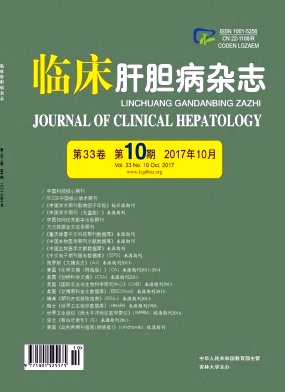ObjectiveTo investigate the expression of sperm-associated antigen 6 (Spag6) in liver cancer tissue and its association with the clinicopathological features and prognosis of liver cancer patients, as well as the effect of Spag6 on the proliferation and migration of HCCLM3 hepatoma cells. MethodsClinical samples were collected from 102 liver cancer patients who were treated in Xiangya Hospital of Central South University from August 2006 to November 2009, and Western blot was used to measure the expression of Spag6 in hepatoma cells, normal liver tissue, tumor tissue, and corresponding adjacent tissue. Immunohistochemistry was used to measure the expression of Spag6 in 102 liver cancer tissue samples, and according to the immunohistochemical scoring criteria, the patients were divided into high Spag6 expression group and low Spag6 expression group. Lentivirus-mediated RNA interference technique was used to silence Spag6 expression in HCCLM3 cells; Western blot was used to analyze silencing effect, wound-healing assay was used to investigate the effect of Spag6 gene silencing on the migration of HCCLM3 cells, and colony formation assay was performed to observe the effect of Spag6 gene silencing on the proliferation of HCCLM3 cells. The chi-square test was used to investigate the association between Spag6 expression and clinicopathological features of liver cancer patients, and the Kaplan-Meier survival analysis and log-rank test were used to analyze the association between Spag6 expression and the prognosis of liver cancer patients. ResultsHepatoma cells and liver cancer tissue had significantly higher expression of Spag6 than the normal LO2 cells and normal liver tissue. Immunohistochemistry showed that the expression rate of Spag6 was 58.8% (60/102) in liver cancer tissue samples and 12.7% (13/102) in adjacent tissue samples (χ2=47123,P<0.001). According to the results of the chi-square test, Spag6 expression was associated with the number of tumor nodules, presence or absence of capsule, vascular invasion, and Edmondson-Steiner classification (χ2=8.360, 6.761, 4.344, and 7.172, P=0.004, 0.009, 0.037, and 0.007). Further analysis showed that the high Spag6 expression group had significantly lower 1-, 3-, and 5-year survival rates than the low Spag6 expression group (71.5% vs 905%,437% vs 688%, 197% vs 487%, χ2=11.228, P=0.001). Cell assays showed significant reductions in the proliferation and migration of HCCLM3 cells after Spag6 gene silencing (both P<0.01). ConclusionSpag6 is highly expressed in hepatoma cells and liver cancer tissue, and its high expression is associated with poor clinicopathological features and postoperative survival of liver cancer. Spag6 can promote the proliferation and migration of hepatoma cells, suggesting that Spag6 may be involved in the development and progression of liver cancer. Therefore, it can be used as a reference index for predicting the prognosis of liver cancer patients and a potential target for liver cancer treatment.







 DownLoad:
DownLoad: